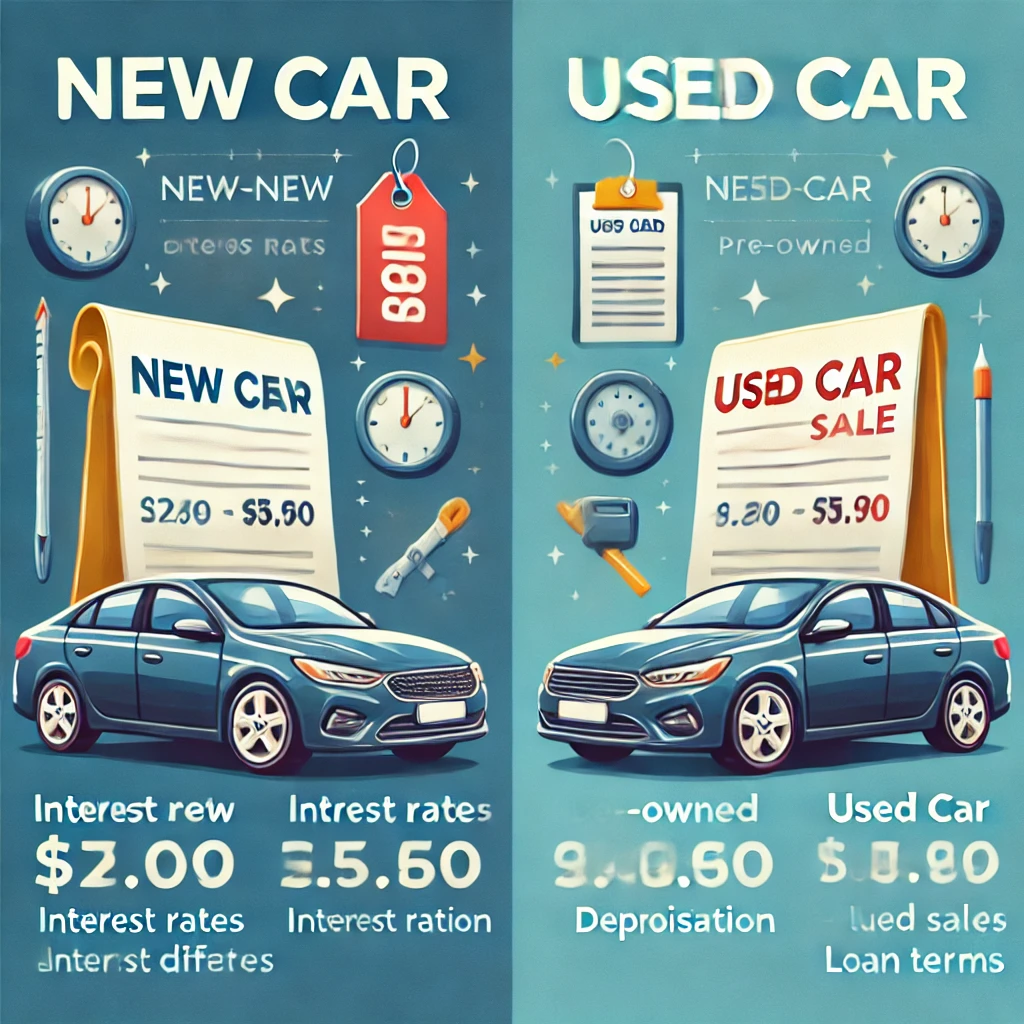
When it comes to buying a car, one of the biggest decisions you’ll make is whether to purchase a new or used vehicle. Both options have their pros and cons, and the same applies to the financing options available for each. Understanding the differences between new car loans and used car loans can help you make an informed decision and save money in the long run.
1. Interest Rates and Loan Terms
New Car Loans
- Lower Interest Rates – New car loans typically come with lower interest rates compared to used car loans. Lenders see new cars as less risky since they are less likely to break down or lose value too quickly.
- Longer Loan Terms – Banks and credit unions often offer longer repayment periods (up to 84 months) for new car loans, making monthly payments more manageable.
Used Car Loans
- Higher Interest Rates – Since used cars have already depreciated and may have more wear and tear, lenders charge higher interest rates to cover the risk.
- Shorter Loan Terms – Used car loans usually come with shorter repayment periods (36-60 months), which means you may have higher monthly payments but less total interest paid over time.
2. Loan Amount and Down Payment
New Car Loans
- Higher Loan Amounts – New cars are more expensive, so the loan amount will be higher.
- Lower Down Payment Options – Some dealerships offer zero or low down payment options for new car loans.
Used Car Loans
- Lower Loan Amounts – Used cars cost less, which means you’ll take a smaller loan compared to a new car loan.
- Higher Down Payment Requirements – Lenders may require a higher down payment (10-20%) to reduce their risk.
3. Depreciation and Resale Value
New Cars
- Faster Depreciation – A new car loses about 20-30% of its value in the first year alone.
- Lower Resale Value – By the time you finish paying off a new car loan, its value will be significantly lower.
Used Cars
- Slower Depreciation – Since the previous owner already absorbed the initial depreciation, the car retains its value better.
- Better Resale Value – If you decide to sell the car later, you may not lose as much money compared to a new car.
4. Insurance Costs and Maintenance
New Car Loans
- Higher Insurance Costs – Since new cars are more valuable, insurance premiums are higher.
- Lower Maintenance Costs – New cars are under warranty, so repairs and maintenance costs are lower initially.
Used Car Loans
- Lower Insurance Costs – Since used cars are cheaper, insurance premiums are typically lower.
- Higher Maintenance Costs – Older cars may need more repairs and maintenance, which could add to ownership costs.
Which Loan Should You Choose?
- Choose a new car loan if you want the latest technology, lower maintenance costs, and longer loan terms.
- Choose a used car loan if you want lower monthly payments, a car with slower depreciation, and lower insurance costs.
Final Thoughts
Both new and used car loans have their advantages and disadvantages. Your decision should be based on your budget, financial stability, and personal preferences. Compare loan offers from different lenders, consider the total cost of ownership, and choose the best option that fits your needs.
